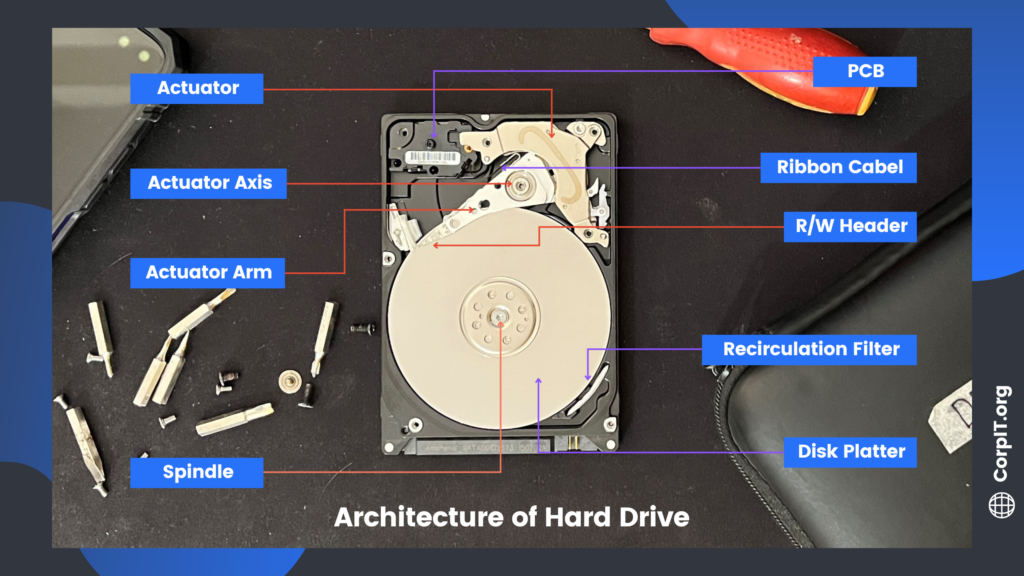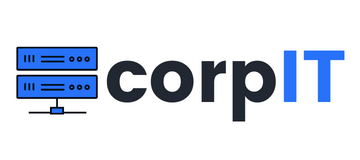In the modern world, data is so critical. People are storing their data on the cloud, hard drives, pen drives, and so on. It is also important to understand where we are storing data in order to gain a deeper understanding of data.
Today’s article will discuss the Architecture of Hard drives and their various components.
Table of Contents
What is Hard Drive?
In the modern day, we all know what a hard drive is. But let’s recap the definition. It is an electro-mechanical data storing device. In this data is stored in zero and one in the disk platter. It mostly acts as ROM.
Components of Hard Drive?
In hard drives, there are lots of components but today we discuss the major components. Using this we can store the data on the hard drive.

Disk Platter
It consists of a circular magnetic disk. This disk contains the data. Aluminum is usually used for this purpose. With the help of a spindle, disk platters are stacked one above another on a hard drive. The spindle rotates that platter so that the R/W head can write the data on this platter. The speed of rotation is determined by the model of the drive. We can write the data on both sides of the platter.
Spindle
Spindle mount all the drives and spin those drives. The speed of the spindle depends upon the model number. It rotates the Platter so that the R/W head can write the data on the platter.
R/W head
Using this head data can store on the disk platter. With the help of the Actuator arm, this head will move backward and forward. This head will not go in any other direction apart from backward and forward.
Actuator Arm
It is a component of the Actuator. This Arm carries the R/W header and is responsible for moving R/W forward and backward.
Actuator Axis
It is the central part of the Actuator. A motor rotates this Axis, which will move the Actuator arm and this way R/W head will read and write data on the platter.
Actuator
HDD actuator is a device that moves the head arm assembly. Its task is, not only to start and secure continuous movement of the hard drive head assembly but also to fully control it. Securing and control of this movement is of crucial importance for performing the elementary function of hard drives.
Ribbon Cable
These are the small cables that carry the data from the platter to the PCB.
PCB
A hard drive’s Printed Circuit Board, or PCB, allows electricity to pass between various components that allow the hard drive to function. If you have ever handled a hard drive, you may recognize the PCB as the green or blue board on the bottom of the device.
Recirculation Filter
When a hard drive has sustained severe damage, the recirculating filter can turn grey or silver — and that’s never a good sign for our data recovery engineers. That’s why we recommend disconnecting a hard drive as soon as it stops functioning normally. Operating the drive in a failed state can prevent successful data recovery.




